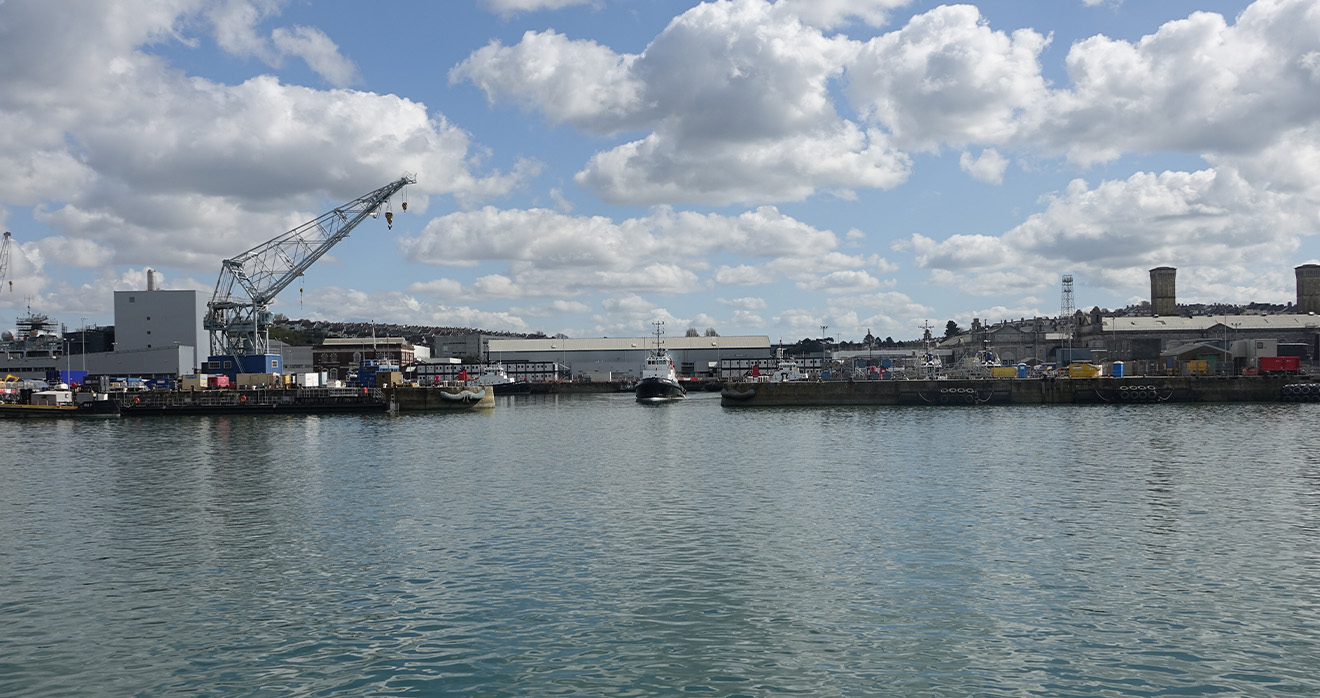Successful claim brought by wife/daughter of former HM Dockyard, Devonport electricians exposed to asbestos dust through their work

Our specialist asbestos disease team secured a six-figure settlement sum for the wife/daughter of former Devonport Dockyard electricians who was indirectly exposed to asbestos dust through their work.
Circumstances of asbestos exposure
Mr P worked at HM Dockyard, Devonport in the 1960s as an electrician. He worked mainly on ship refits. His work found him pulling out old electrical cables and fitting new ones. He worked around other tradesmen, including plumbers, carpenters, pipe fitters and welders.
Mr P often worked in the ships’ boiler rooms where laggers ripped off asbestos lagging from the pipes and then removed the pipes so that they could be replaced. Pipe fitters and plumbers came in to fit new pipes and laggers then re-lagged them with asbestos. It was incredibly dusty and dirty work and Mr P worked amongst it all. He was exposed to asbestos dust as a result.
By the end of the working day, Mr P’s overalls were covered in asbestos dust and fibres. He took his overalls home to be handwashed by Mrs P. She first shook out the overalls to try to release as much dust as possible. The process of shaking out and washing the overalls saw Mrs P exposed to asbestos dust.
Mrs P’s late father also worked at HM Dockyard, Devonport between the mid-1950s and around 1983. He was initially employed as an electrician but later went on to become a progress chaser. He was exposed to asbestos dust in the same way as Mr P and came home with asbestos dust on his overalls. Mrs P was exposed to asbestos dust as it was displaced from her father’s overalls and contaminated the home. Mrs P recalled cuddling her father whilst he was still in his asbestos-laden overalls when she was pregnant with her first child.
In addition when Mr and Mrs P were first married they lived in an upstairs flat directly opposite the Dockyard. The flat had large sash windows which Mrs P would open wide in the summer. She would take walks in the vicinity of the Dockyard and walked along the perimeter when going to visit her parents. Therefore there was also the potential for Mrs P to have been exposed to asbestos from the environment by living in close proximity to the Dockyard, and from dust in the air due to the work ongoing at the Dockyard.
Diagnosis of mesothelioma
Mrs P was fit and active before the onset of mesothelioma symptoms and enjoyed walks with Mr P around their local area. She noticed that she was becoming short of breath when climbing stairs and went to see her GP who referred her for a chest x-ray and CT scan. A biopsy later confirmed the devastating news that she had mesothelioma.
Mrs P instructed the specialist asbestos disease team at RWK Goodman to investigate a claim. Partner, Jennifer Seavor, attended Mrs P who initially said she did not know how she had come into contact with asbestos. Mrs P had worked for a well know shoe company and her job had involved manufacturing patent leather shoes. During this process she used a white powder to stop the shoes sticking and wondered if this may have contained asbestos. However Jennifer took detailed witness statements from her and Mr P about their employment histories and it was during this meeting that it came to light that Mrs P may have had exposure from her father and husband’s work at the Dockyard, as well as whilst living in close proximity to it for a few years.
Investigation into a claim and court proceedings
Jennifer initially supported Mrs P by assisting her with applications for government benefits she was entitled to claim due to having developed mesothelioma.
Attention then focussed on the legal claim and a formal Letter of Claim was sent to the Ministry of Defence and followed up with witness evidence from Mr and Mrs P, as well as a medical report from Respiratory Consultant, Professor Nicholas Maskell. In the absence of a liability admission from the Ministry of Defence, Jennifer prepared to issue Court proceedings in the High Court. Just before this became necessary, the Ministry of Justice admitted liability and an interim payment of damages was made to Mrs P. Mrs P and Mr P were in the process of moving to a house better-suited to Mrs P’s needs at the time and so the interim payment was put to good use.
Jennifer served a Schedule of Loss setting out the maximum valuation of Mrs P’s claim together with supportive documentary and witness evidence, as well as a settlement offer. The offer reflected an enhanced settlement, i.e. a proportion of the additional heads of loss that would be available if the claim was settled after Mrs P’s death such as funeral expenses and bereavement damages, even though the overall value of the claim on a fatal basis was less than its value on a living basis.
The Ministry of Defence did not respond to the settlement offer. In the meantime, Jennifer obtained Mrs P’s updated medical records and re-instructed Professor Maskell to prepare a supplementary medical report as Mrs P was doing so well and Jennifer anticipated she would outlive her originally predicted life expectancy. Jennifer re-valued Mrs P’s claim and made a higher settlement offer to the Ministry of Defence whilst withdrawing the original, lower settlement offer.
With the Ministry of Defence still not engaging in any settlement negotiations, Court proceedings were issued in the High Court and served on the Ministry of Defence’s solicitors. The claim was laid down for an initial hearing before a Master of the Court but a Consent Order was agreed with the Ministry of Defence’s solicitors beforehand (setting out a timetable for the exchange of further evidence leading up to a final Assessment of Damages hearing) meaning that the hearing did not need to go ahead.
Settlement
A settlement offer was then made by the Ministry of Defence and negotiations ensued, resulting in a six-figure settlement sum. The settlement included an uplift to reflect those additional heads of loss that would have been recoverable had Mrs P opted to have her claim settled after her death together with an agreement that the Defendant would pay medical treatment costs if any treatment not available on the NHS was recommended to Mrs P in the future. Mrs P has since started such treatment and the Defendant is paying for it as agreed.
Jennifer commented:
“The circumstances of this claim were very sad given that Mrs P was exposed to asbestos dust through the work of her loved ones and living near a site where asbestos was being used. It also shows how important it is to speak to people in detail about their lives as often the way in which they suspect they were exposed to asbestos isn’t correct, or perhaps not the easiest route to pursue a legal claim. Whilst the compensation recovered does not change Mrs P’s prognosis I hope it has given her some peace of mind and the means to live well for as long as possible. The settlement included provision for future treatment costs and, just recently, Mrs P has taken advantage of this by starting private medical treatment funded by the Defendant which I hope will give Mrs P further valuable years to enjoy with her husband and lovely family.”
Contact our specialist asbestos and mesothelioma solicitors to find out more about whether you can make a claim for compensation.
Call now









